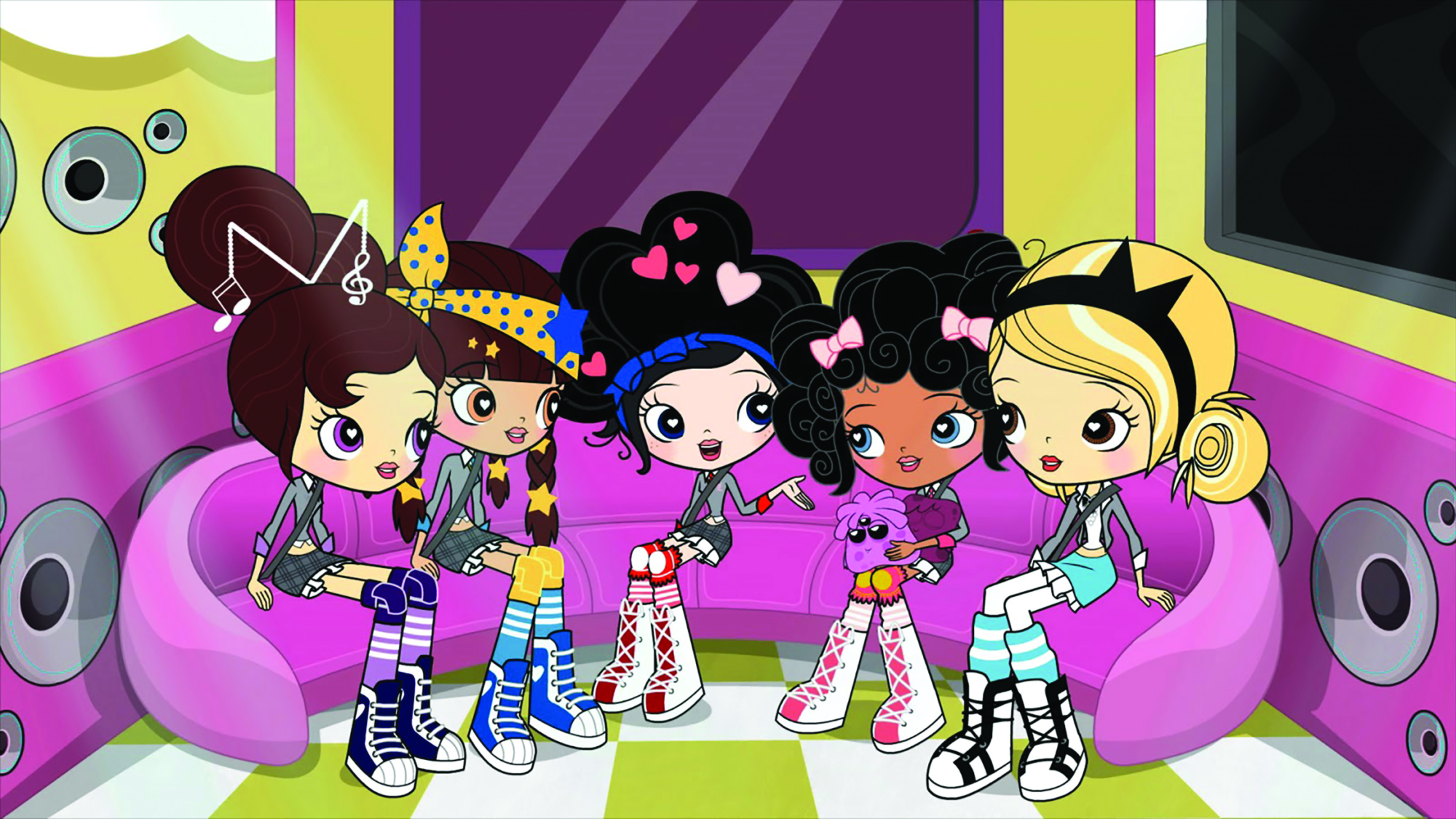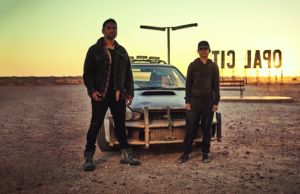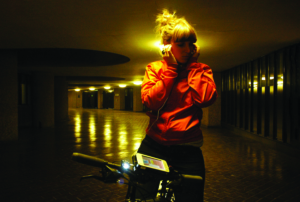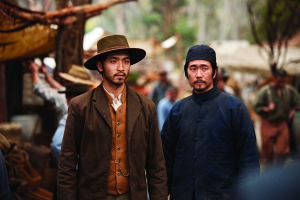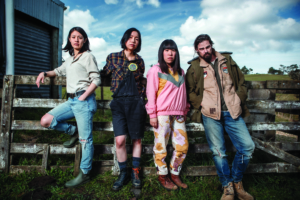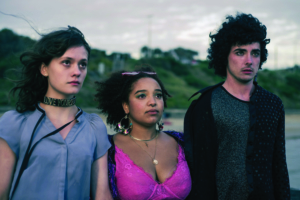Australia has consistently produced high-quality screen content for children, with some of the country’s best television series – from Skippy the Bush Kangaroo, which aired from 1968 to 1970, to today’s Bluey[1]Editor’s note: for more on Bluey, see Cameron Williams’ piece ‘Top Dogs: The ABC’s Bluey and Australian Children’s Animation’ in this issue of Metro, pp. 38–43. – having been broadcast, and now streamed, around the world. From a local policy perspective, children (generally referring, in industry terms, to persons under fourteen years of age) have been considered a ‘special audience’, easily influenced by what they see on screen.[2]Anna Potter, ‘A Very Special Audience: How Layering and Drift in Australian Cultural Policy Have Affected the Production of Children’s Television Drama for Digital Markets’, International Journal of Cultural Policy, vol. 20, no. 1, 2014, p. 40. While the Broadcasting Services Act 1992 defines ‘child’ as a person under the age of eighteen, following the Family Law Act 1975, the screen industries generally adhere to the definition set out in the Children’s Television Standards 2009, Australian Communications and Media Authority (ACMA), p. 4, available at <https://www.acma.gov.au/-/media/Diversity-Localism-and-Accessibility/Advice/pdf/childrens_tv_standards_2009-pdf.pdf>, accessed 29 July 2019. Within the landscape of television, therefore, children’s programming has experienced high levels of regulation since the late 1970s, most saliently in the form of the content quotas enshrined in the Children’s Television Standards (CTS) first introduced in 1979 and updated in 2009.[3]See Potter, ‘A Very Special Audience’, ibid., p. 40; and ‘History of Children’s Television Standards’, ACMA, 15 February 2017, archived at <https://web.archive.org/web/20170413093338/https://www.acma.gov.au/Industry/Broadcast/Television/Childrens-TV/history-of-childrens-television-standards>, accessed 1 August 2019. But the rigorous scrutiny and regulation that attends to children’s media engagement, along with the related imperatives to defend and support original, distinctly Australian content for this audience, operate in a landscape in which the consumption of screen media has changed considerably. The introduction of digital transmission in 2001 resulted in a fragmentation of audience and advertising revenue, which was exacerbated by children’s programming already being available on pay TV as well; over the decade that followed, this was further complicated by the rise to prominence of web-based streaming (YouTube) and on-demand services (such as Netflix).
Media academics Anna Potter and Jeanette Steemers point out that ‘[w]hile the internet has facilitated a proliferation in children’s media offerings and platforms, television remains the dominant medium in children’s lives’.[4]Anna Potter & Jeanette Steemers, ‘Children’s Television in Transition: Policies, Platforms and Production’, Media International Australia, vol. 163, no. 1, 2017, p. 6. At the same time, because children’s content is expensive to produce and restrictions on advertising during children’s programs[5]See ‘Advertising to Children’, ACMA, 4 January 2013, <https://www.acma.gov.au/Citizen/TV-Radio/Television/Kids-and-TV/advertising-to-children-kids-tv-and-advertising-i-acma>, accessed 26 July 2019. mean that the rate of return on a children’s series is often unviable, there is little commercial incentive for local broadcasters to produce original children’s content. One way Australian producers have tackled this obstacle is by reaching out to East Asian screen industries for collaboration.
While the number of Australian children’s programs co-produced by Asian companies has been growing since the mid 1990s as investment in the region’s creative industries has intensified, today’s particular pressure to capitalise on foreign investment – and, thus, to internationalise Australian content – has led to an influx of titles in recent years, including Zigby (co-produced with Singapore), first aired in 2009; Guess How Much I Love You (co-produced with Singapore), in 2012; hoopla doopla! (co-produced with China), in 2014; and Kuu Kuu Harajuku (co-produced with Malaysia), in 2015. This shift towards greater collaboration between Asian and Australian screen content producers highlights new forms of mobility in the production and exhibition of children’s television, and enables new opportunities for representation and diversity on Australian screens. But the flip side of this blurring of countries of origin is, as Potter has argued, ‘a loss of cultural specificity and with it a capacity to speak directly to Australian children’.[6]Anna Potter, Creativity, Culture & Commerce: Producing Australian Children’s Television with Public Value, Intellect, Bristol & Chicago, 2015, p. xi.
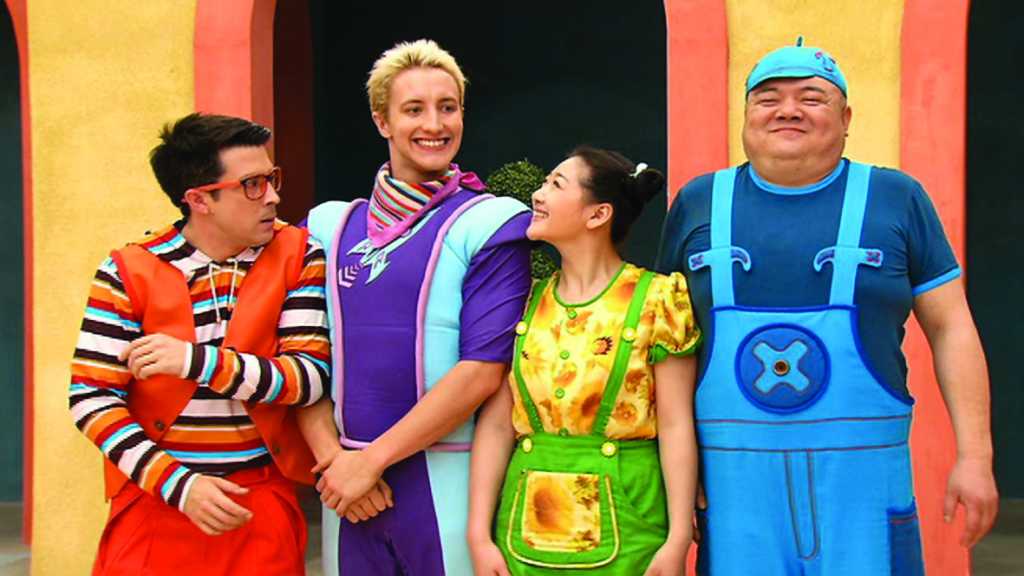
Using Network Ten’s Kuu-Kuu Harajuku and the ABC’s hoopla doopla! as case studies – one an animation, and the other a live-action series – I explore questions about how the policy imperatives underpinning children’s programming can (or should) adapt to increasing digitisation, multi-platform delivery and greater internationalisation within the industry.
Animation and (non-)Australianness: Kuu Kuu Harajuku
Kuu Kuu Harajuku is an animated series conceived by pop star Gwen Stefani featuring a character named G (Maggie Chretien) and her band mates in girl group HJ5 – Love (Daisy Masterman), Angel (Emma Taylor-Isherwood), Music (Sally Taylor-Isherwood) and Baby (Charlotte Nicdao) – who are inspired by Stefani’s backup performers the Harajuku Girls. The show was first pitched at the Asian Animation Summit[7]See Asian Animation Summit website, <https://aas.kidscreen.com/>, accessed 29 July 2019. in 2013 before it was commissioned by Network Ten in Australia, premiering on Eleven (now 10 Peach) in November 2015 and subsequently airing in the United States on Nickelodeon in October 2016. The series was produced by Moody Street Kids (Victoria), with additional funding from Film Victoria, Vision Animation (Malaysia), DHX Media (Canada) and Red Flags Fly Inc. (US).[8]See Kate Stanhope, ‘Gwen Stefani Animated Series Heads to Nickelodeon’, The Hollywood Reporter, 13 September 2016, <https://www.hollywoodreporter.com/live-feed/gwen-stefani-nickelodeon-animated-series-928215>; and ‘Nickelodeon to Premiere New Animated Series Kuu Kuu Harajuku from Global Superstar Gwen Stefani’, MyCreative, <http://www.mycreative.com.my/news_events/nickelodeon-to-premiere-new-animated-series-kuu-kuu-harajuku-from-global-su>, both accessed 29 July 2019. Stefani remained on board as co–executive producer and performer of the series’ theme song.
The HJ5 singers and their bumbling manager, Rudie (Danny Smith), live in the colourful and futuristic Harajuku City. Each performance is foiled by some obstacle or disaster, including the machinations of the series’ killjoy villains General NoFun and Commander Bo-Ring (both voiced by Ian Bliss). Screen Australia describes the series as ‘a collision of cultures, a grab bag of music, fashion and style. It’s a ping-pong match between East and West.’[9]‘KuuKuu [sic] Harajuku Series 1’, The Screen Guide, Screen Australia, <http://www.screenaustralia.gov.au/the-screen-guide/t/t/33211>, accessed 26 July 2019.
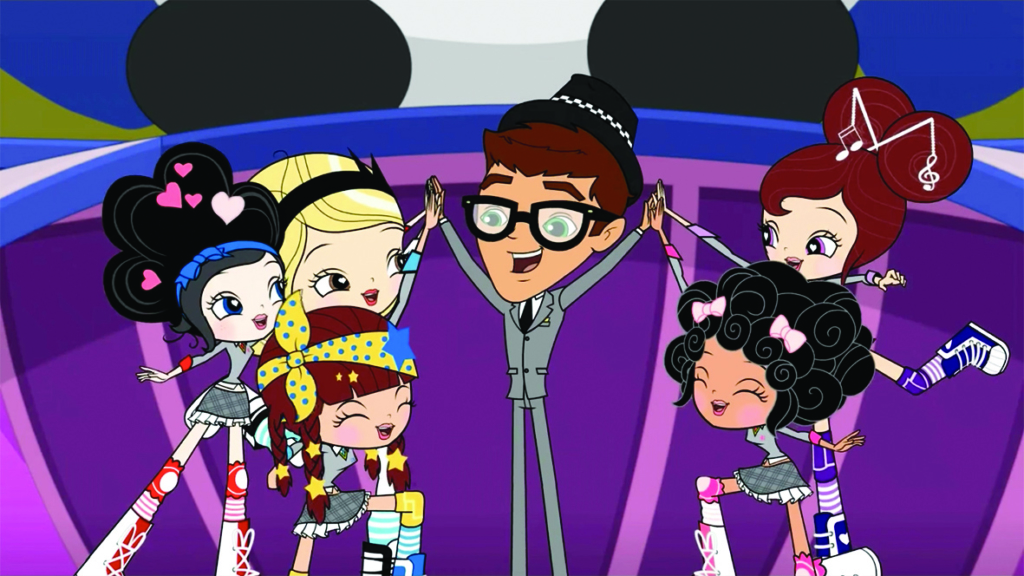
As a format, animation is particularly suited to co-production; it can be created in multiple sites around the world, and is generally cheaper to make than live-action drama. Because animation is less culturally specific than live action in terms of character and setting, it is also easier to revoice and distribute in global media markets with different languages and accents.[10]Anna Potter & Huw Walmsley-Evans, ‘The Slow Death of Australian Children’s TV Drama’, Mumbrella, 28 April 2017, <https://mumbrella.com.au/slow-death-australian-childrens-tv-drama-441277>, accessed 26 July 2019. As Screen Australia has noted, ‘Not surprisingly, the increase in animated co-productions has paralleled the increase in children’s programs. All but two of the total animated co-productions […] have been programs for children.’[11]‘Statistics: TV Drama’, Co-production Program, Screen Australia, <http://www.screenaustralia.gov.au/funding-and-support/co-production-program/statistics/tv-drama-co-productions>, accessed 26 July 2019. And, as film scholar Mike Walsh has astutely pointed out, the form ‘is not only a means of foregrounding the possibilities of new digital technologies, but it also provides a means of effectively blurring markers of national origin’.[12]Mike Walsh, ‘At the Edge of Asia: The Prospects for Australia–China Film Co-production’, Studies in Australasian Cinema, vol. 6, no. 3, 2012, p. 311.
But this reduced cultural specificity butts against Screen Australia’s new guidelines for children’s animation, which stipulate that preference will be given to programs with Australian voices or those that consider a separate Australian voice track; this aligns with the agency’s broader mandate to advocate for Australian perspectives and employment within the screen sector.[13]The idea of ‘Australian voices’ may prove a sticking point within a multicultural environment wherein a variety of accents exists, but Screen Australia investment manager Tim Phillips has clarified, ‘I don’t see any reason why a diverse, multicultural Australian society can’t be represented in an animated show, and yet still to the viewer be completely understandable as an Australian show’. See David Knox, ‘Screen Australia Now Prefers Australian Accents in Animation’, TV Tonight, 14 October 2015, <http://www.tvtonight.com.au/2015/10/screen-australia-now-prefers-australian-accents-in-animation.html>, accessed 26 July 2019. Kuu Kuu Harajuku embodies a challenge to these guidelines, however: its characters speak in a generic American accent, despite the casting of several Australian voice actors (including Masterman, Nicdao and Bliss).[14]The case of Kuu Kuu Harajuku can be compared to that of Bluey, which has insisted on retaining Australian accents even as the series prepares to be marketed to an international audience; see Peter McCutcheon, ‘Bluey, the Hit Australian Children’s Cartoon, Is Set to Go Global – but Only with Aussie Accents Intact’, ABC News, 9 April 2019, <https://www.abc.net.au/news/2019-04-09/bluey-set-to-go-global-but-only-with-australian-accents-intact/10968268>, accessed 29 July 2019. Moreover, while the series boasts an intricately rendered world inspired by Japan – which has received criticism as an instance of cultural appropriation[15]See, for example, Erica Russell, ‘Kuu Kuu Harajuku: On Growing Up with Gwen Stefani, Japan Street Fashion + Cultural Appropriation’, PopCrush, 30 September 2016, <https://popcrush.com/gwen-stefani-kuu-kuu-harajuku-japanese-fashion-appropriation/>, accessed 26 July 2019. – Australian culture, significantly, does not feature in Kuu Kuu Harajuku at all. Arguably, this is a ramification of Australian children’s productions targeting a larger international market. ‘The trouble with co-productions is that everyone wants that TV to work for their audience and so there’s pressure to lose overt markers of Australianness,’ suggests Potter.
You’re ending up in the position where the taxpayer is subsidising kids TV but the end result doesn’t always look or feel Australian […] Is the public really getting value for its investment in kids’ TV if that kids’ TV doesn’t really situate kids in their own Australian culture?[16]Anna Potter, quoted in Jane Cameron, ‘Academic Says Children’s TV Is Losing Aussie Voice’, University of the Sunshine Coast website, 8 April 2015, <http://www.usc.edu.au/explore/usc-news-exchange/news-archive/2015/april/academic-says-childrens-tv-is-losing-aussie-voice>, accessed 26 July 2019.
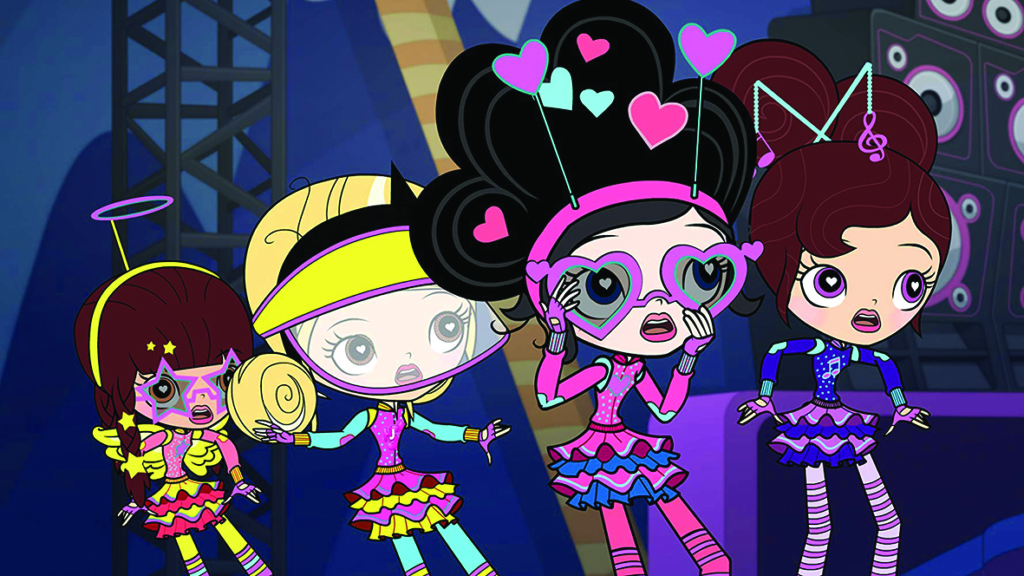
Cross-cultural collaboration: hoopla doopla!
In contrast to Kuu Kuu Harajuku, hoopla doopla! does make some effort to cater for both Australian and Chinese child audiences – and to depict their respective cultures. The series centres on six colourfully dressed characters with acrobatic skills; half of the cast is Chinese, and the other half, Australian. Apart from voiceover narration, there is no dialogue, and the action is predominantly slapstick. Shot over six months in Zhuzhou, a city approximately 1400 kilometres south of Beijing, with a Chinese crew and co-director as well as translators, the series was produced for the ABC and China Central Television.[17]Megan Reynolds, ‘Building Chinese Relations with Kids TV’, Mumbrella, 26 February 2014, <https://mumbrella.com.au/abc-4-kids-co-production-builds-bridges-china-207880>, accessed 26 July 2019.
The physical nature of hoopla doopla!, along with its lack of dialogue, has allowed it to be easily tailored for either of its target viewerships. Chinese culture was portrayed in the form of events such as the Lantern Festival and the Dragon Boat Festival, and English- and Chinese-language resources aligning with the Australian Curriculum’s Asian-studies foci were developed in partnership with the Australian Children’s Television Foundation and the Asia Education Foundation.[18]See ‘hoopla doopla!’, Australian Children’s Television Foundation website, <https://actf.com.au/education-programs/id/120/>, accessed 26 July 2019. In turn, Australian traditions were demonstrated largely through an engagement with nature and the outdoors, including backyard camping, picnicking and planting vegetables in a domestic garden.
In contrast to Kuu Kuu Harajuku, hoopla doopla! does make some effort to cater for both Australian and Chinese child audiences … The physical nature of hoopla doopla!, along with its lack of dialogue, has allowed it to be easily tailored for either of its target viewerships.
That hoopla doopla! was produced for Australia’s leading children’s broadcaster is worth emphasising. The ABC encompasses dedicated children’s TV channels ABC Me (formerly ABC3) and ABC Kids, with both stations boasting accompanying mobile apps, a web-based portal[19]See ABC Children, <https://www.abc.net.au/children/>, accessed 26 July 2019. and dedicated YouTube channels.[20]See <https://www.youtube.com/channel/UCmihBNRtvvTtoVzAnozXDWA> and <https://www.youtube.com/channel/UCgz70jJUTxGBmvaIi4duEAw>, both accessed 26 July 2019. The ABC is exempt from the CTS and operates according to its own code of practice, which does not stipulate any quotas for Australian content; instead, the code decrees that children’s programs should be ‘enjoyable and enriching’ and provide ‘opportunities for [children] to express themselves’.[21]See Code of Practice (& Associated Standards), ABC website, 15 January 2019, p. 9, <https://about.abc.net.au/wp-content/uploads/2016/05/CODE-final-15-01-2019.pdf>, accessed 26 July 2019. Nevertheless, locally produced children’s television remains important in a policy context in relation to national cultural representation – the ABC’s own charter requires it to broadcast programs that ‘contribute to a sense of national identity and inform and entertain, and reflect the cultural diversity of, the Australian community’.[22]See Commonwealth of Australia, Australian Broadcasting Corporation Act 1983, Part II, Section 6, clause 1ai, available at <https://www.legislation.gov.au/Details/C2018C00079>, accessed 26 July 2019.
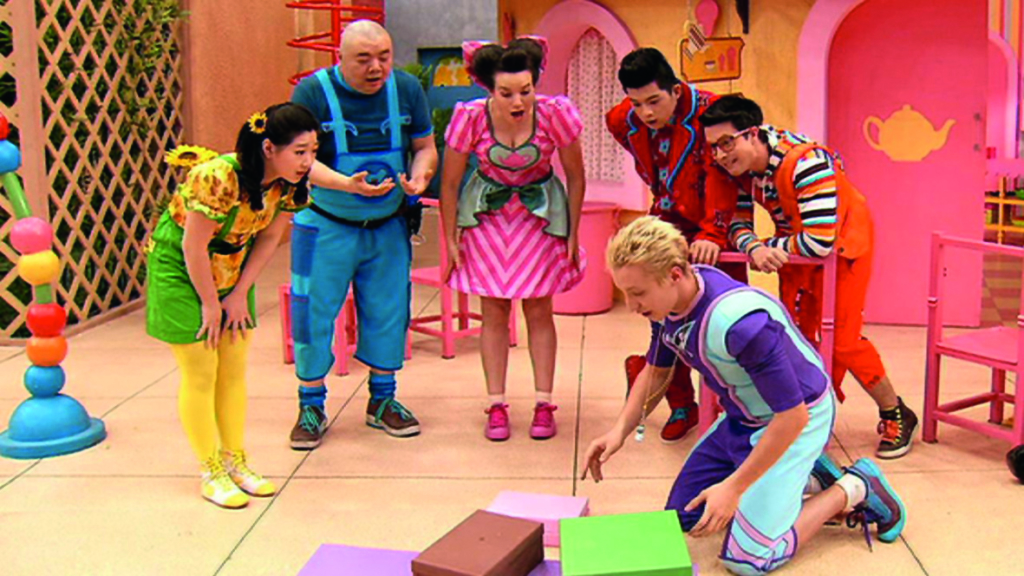
Reflecting on hoopla doopla!, Simon Hopkinson, former head of commissioning and development of children’s content for ABC TV, notes, ‘There are always challenges in any international co-production […] Obviously language is a major one, but there were also differences in production methodologies.’ He also admits that the budget for the show was in line with other live-action titles, which meant it would have been ‘prohibitively expensive’ to make without the Chinese contribution. However, he does stress that ‘[p]erhaps surprisingly we found few differences in the kind of stories we wanted to tell and the way in which we wanted to tell them. Of course this was helped by the Chinese sense of humour being remarkably similar to our own.’ Hopkinson also recalls, ‘The main thing learned from the experience is that the differences between us and our Chinese colleagues are far fewer than the things we share in common.’[23]Simon Hopkinson, quoted in Reynolds, op. cit. These positive endorsements for Australian–Asian co-productions in children’s television augur well for future collaborations.
*
Creators of children’s television in Australia are continuing to actively pursue partnership opportunities with their Asian counterparts. The technological and industrial changes that have spurred these collaborations over the last two decades are still playing out, encouraging the birth of a middle ground between a regulatory framework for children’s programming underpinned by the protection of local content and the encouragement of innovation and internationalisation. But, in the industry’s bid to harness the potential for Australia’s involvement in the region’s expanding media industries, Australian screen content producers must ensure that the titles they put out into the world do not adversely impact the way Australian cultural identity is portrayed for local audiences. Examples like hoopla doopla!, which foreground play and collaboration in representation as well as production, are leading the way in this regard. As former ABC director of television Kim Dalton asserts, ‘When offered the choice, children want to watch Australian programmes, but they can only do so if the programmes are produced and are readily accessible.’[24]Kim Dalton, ‘The ABC of Trust’, Media International Australia, vol. 163, no. 1, 2017, p. 13, available at <https://blog-actf.com.au/the-abc-of-trust/>, accessed 1 August 2019.
Endnotes
| 1 | Editor’s note: for more on Bluey, see Cameron Williams’ piece ‘Top Dogs: The ABC’s Bluey and Australian Children’s Animation’ in this issue of Metro, pp. 38–43. |
|---|---|
| 2 | Anna Potter, ‘A Very Special Audience: How Layering and Drift in Australian Cultural Policy Have Affected the Production of Children’s Television Drama for Digital Markets’, International Journal of Cultural Policy, vol. 20, no. 1, 2014, p. 40. While the Broadcasting Services Act 1992 defines ‘child’ as a person under the age of eighteen, following the Family Law Act 1975, the screen industries generally adhere to the definition set out in the Children’s Television Standards 2009, Australian Communications and Media Authority (ACMA), p. 4, available at <https://www.acma.gov.au/-/media/Diversity-Localism-and-Accessibility/Advice/pdf/childrens_tv_standards_2009-pdf.pdf>, accessed 29 July 2019. |
| 3 | See Potter, ‘A Very Special Audience’, ibid., p. 40; and ‘History of Children’s Television Standards’, ACMA, 15 February 2017, archived at <https://web.archive.org/web/20170413093338/https://www.acma.gov.au/Industry/Broadcast/Television/Childrens-TV/history-of-childrens-television-standards>, accessed 1 August 2019. |
| 4 | Anna Potter & Jeanette Steemers, ‘Children’s Television in Transition: Policies, Platforms and Production’, Media International Australia, vol. 163, no. 1, 2017, p. 6. |
| 5 | See ‘Advertising to Children’, ACMA, 4 January 2013, <https://www.acma.gov.au/Citizen/TV-Radio/Television/Kids-and-TV/advertising-to-children-kids-tv-and-advertising-i-acma>, accessed 26 July 2019. |
| 6 | Anna Potter, Creativity, Culture & Commerce: Producing Australian Children’s Television with Public Value, Intellect, Bristol & Chicago, 2015, p. xi. |
| 7 | See Asian Animation Summit website, <https://aas.kidscreen.com/>, accessed 29 July 2019. |
| 8 | See Kate Stanhope, ‘Gwen Stefani Animated Series Heads to Nickelodeon’, The Hollywood Reporter, 13 September 2016, <https://www.hollywoodreporter.com/live-feed/gwen-stefani-nickelodeon-animated-series-928215>; and ‘Nickelodeon to Premiere New Animated Series Kuu Kuu Harajuku from Global Superstar Gwen Stefani’, MyCreative, <http://www.mycreative.com.my/news_events/nickelodeon-to-premiere-new-animated-series-kuu-kuu-harajuku-from-global-su>, both accessed 29 July 2019. |
| 9 | ‘KuuKuu [sic] Harajuku Series 1’, The Screen Guide, Screen Australia, <http://www.screenaustralia.gov.au/the-screen-guide/t/t/33211>, accessed 26 July 2019. |
| 10 | Anna Potter & Huw Walmsley-Evans, ‘The Slow Death of Australian Children’s TV Drama’, Mumbrella, 28 April 2017, <https://mumbrella.com.au/slow-death-australian-childrens-tv-drama-441277>, accessed 26 July 2019. |
| 11 | ‘Statistics: TV Drama’, Co-production Program, Screen Australia, <http://www.screenaustralia.gov.au/funding-and-support/co-production-program/statistics/tv-drama-co-productions>, accessed 26 July 2019. |
| 12 | Mike Walsh, ‘At the Edge of Asia: The Prospects for Australia–China Film Co-production’, Studies in Australasian Cinema, vol. 6, no. 3, 2012, p. 311. |
| 13 | The idea of ‘Australian voices’ may prove a sticking point within a multicultural environment wherein a variety of accents exists, but Screen Australia investment manager Tim Phillips has clarified, ‘I don’t see any reason why a diverse, multicultural Australian society can’t be represented in an animated show, and yet still to the viewer be completely understandable as an Australian show’. See David Knox, ‘Screen Australia Now Prefers Australian Accents in Animation’, TV Tonight, 14 October 2015, <http://www.tvtonight.com.au/2015/10/screen-australia-now-prefers-australian-accents-in-animation.html>, accessed 26 July 2019. |
| 14 | The case of Kuu Kuu Harajuku can be compared to that of Bluey, which has insisted on retaining Australian accents even as the series prepares to be marketed to an international audience; see Peter McCutcheon, ‘Bluey, the Hit Australian Children’s Cartoon, Is Set to Go Global – but Only with Aussie Accents Intact’, ABC News, 9 April 2019, <https://www.abc.net.au/news/2019-04-09/bluey-set-to-go-global-but-only-with-australian-accents-intact/10968268>, accessed 29 July 2019. |
| 15 | See, for example, Erica Russell, ‘Kuu Kuu Harajuku: On Growing Up with Gwen Stefani, Japan Street Fashion + Cultural Appropriation’, PopCrush, 30 September 2016, <https://popcrush.com/gwen-stefani-kuu-kuu-harajuku-japanese-fashion-appropriation/>, accessed 26 July 2019. |
| 16 | Anna Potter, quoted in Jane Cameron, ‘Academic Says Children’s TV Is Losing Aussie Voice’, University of the Sunshine Coast website, 8 April 2015, <http://www.usc.edu.au/explore/usc-news-exchange/news-archive/2015/april/academic-says-childrens-tv-is-losing-aussie-voice>, accessed 26 July 2019. |
| 17 | Megan Reynolds, ‘Building Chinese Relations with Kids TV’, Mumbrella, 26 February 2014, <https://mumbrella.com.au/abc-4-kids-co-production-builds-bridges-china-207880>, accessed 26 July 2019. |
| 18 | See ‘hoopla doopla!’, Australian Children’s Television Foundation website, <https://actf.com.au/education-programs/id/120/>, accessed 26 July 2019. |
| 19 | See ABC Children, <https://www.abc.net.au/children/>, accessed 26 July 2019. |
| 20 | See <https://www.youtube.com/channel/UCmihBNRtvvTtoVzAnozXDWA> and <https://www.youtube.com/channel/UCgz70jJUTxGBmvaIi4duEAw>, both accessed 26 July 2019. |
| 21 | See Code of Practice (& Associated Standards), ABC website, 15 January 2019, p. 9, <https://about.abc.net.au/wp-content/uploads/2016/05/CODE-final-15-01-2019.pdf>, accessed 26 July 2019. |
| 22 | See Commonwealth of Australia, Australian Broadcasting Corporation Act 1983, Part II, Section 6, clause 1ai, available at <https://www.legislation.gov.au/Details/C2018C00079>, accessed 26 July 2019. |
| 23 | Simon Hopkinson, quoted in Reynolds, op. cit. |
| 24 | Kim Dalton, ‘The ABC of Trust’, Media International Australia, vol. 163, no. 1, 2017, p. 13, available at <https://blog-actf.com.au/the-abc-of-trust/>, accessed 1 August 2019. |
